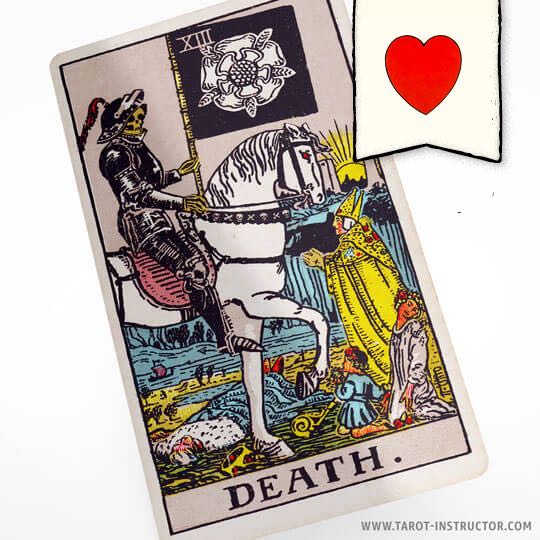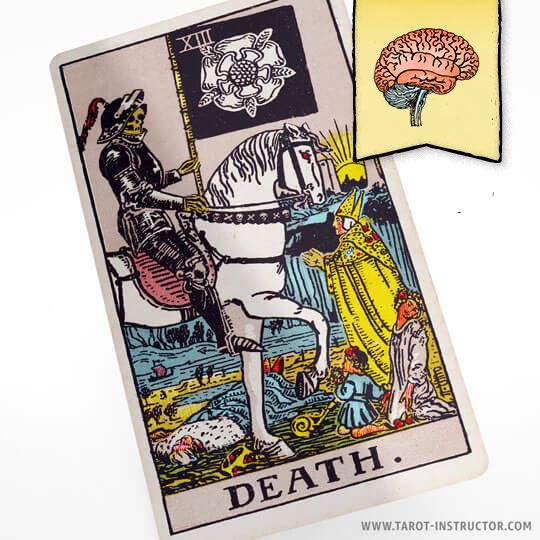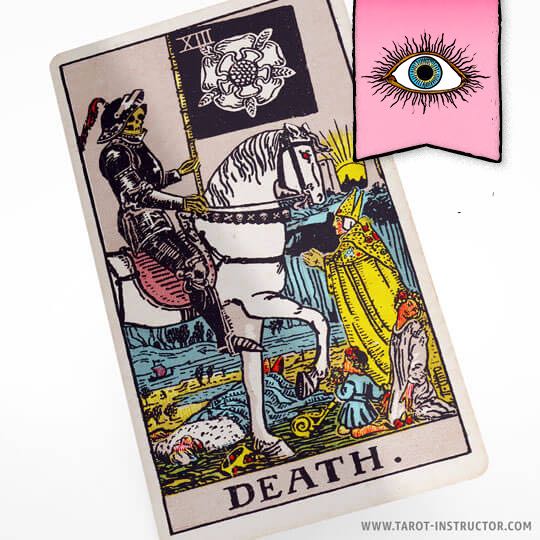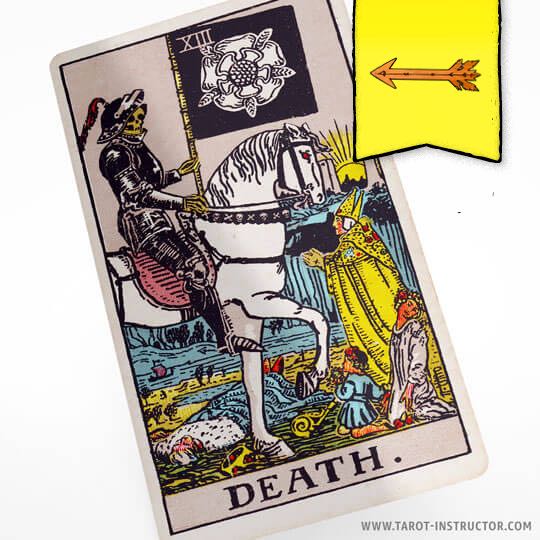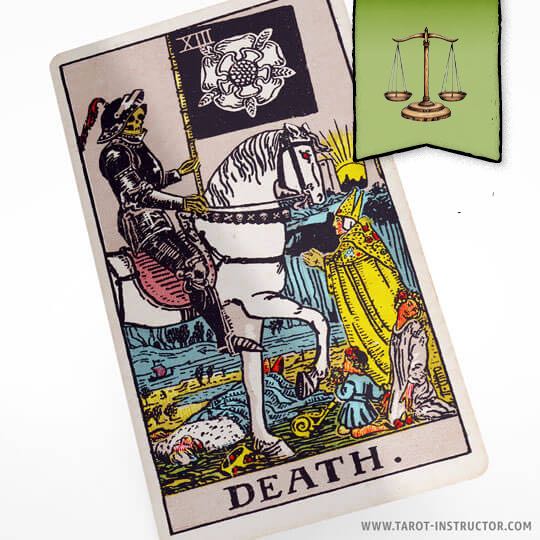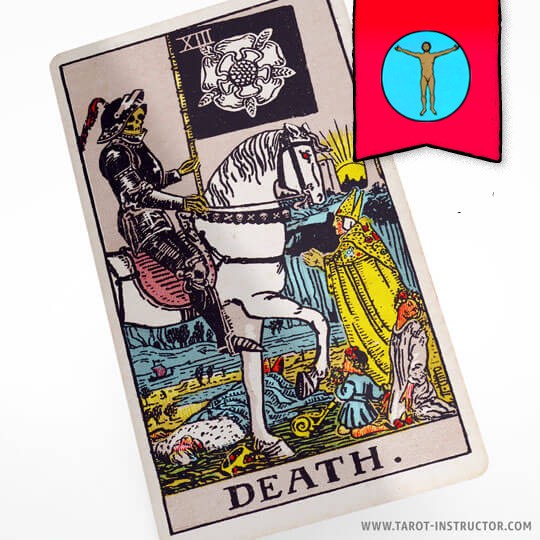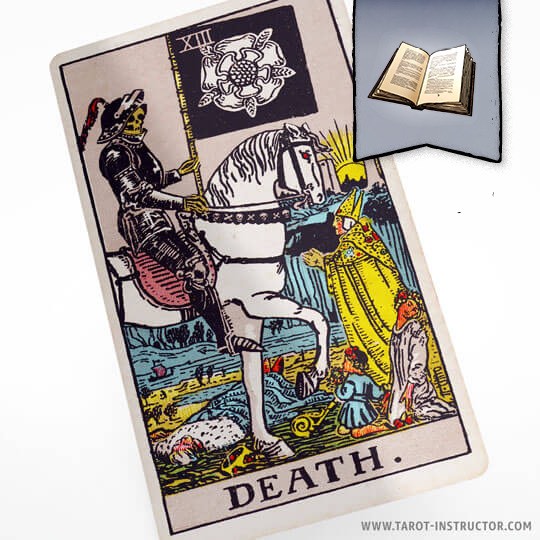Death as advice
„Release what no longer serves you to welcome new beginnings.“
Death tarot card features following symbolic elements
Understanding the Death Card as Present Upright and Reversed
The Death card, often misunderstood, is a significant tarot card that symbolizes transformation, endings, and new beginnings. It is the 13th card in the Major Arcana and is associated with the zodiac sign of Scorpio. In this article, we will explore the meaning of the Death card as it pertains to the present, examining both its upright and reversed positions. We will also delve into its implications for potential, new, existing, and ex-relationships.
The Symbolism of the Death Card
The Death Card Number and Meaning
The Death card is the 13th card in the Tarot, which holds powerful symbolism regarding transformation and change. In numerology, the number 13 is often associated with rebirth and renewal, symbolizing the end of one phase and the beginning of another. The Death card embodies these qualities, urging you to let go of what no longer serves you to embrace new opportunities.
The Death Card Element and Zodiac Sign
The Death card is linked to the element of Water, which represents emotions, intuition, and the subconscious. Water is fluid and adaptable, echoing the transformative nature of the Death card. Its association with Scorpio, known for its depth, intensity, and transformative energy, further emphasizes the themes of profound change and emotional rebirth.
General Meaning of the Death Card in the Present
When interpreting the Death card as present, whether upright or reversed, it is essential to consider the card’s overarching themes of transformation and closure. In its upright position, the Death card signifies a significant transition or ending that paves the way for new beginnings. This card indicates that you may be experiencing a major life change, such as the end of a relationship, a job, or a way of thinking that allows you to grow and evolve.
Conversely, when the Death card as present appears reversed, it suggests resistance to change or an inability to let go. This position may indicate that you are clinging to past situations, preventing you from embracing new opportunities. The reversed Death card encourages you to confront what is holding you back and to recognize that transformation is necessary for personal growth.
Death Card as Present in Potential Relationships
Upright: In the context of potential relationships, the upright Death card as present signifies the potential for transformation and deep emotional connections. You may find that you are attracting individuals who challenge you to grow and evolve. This card suggests that a new relationship may help you shed old, unhelpful patterns and open yourself up to deeper intimacy and connection.
Reversed: When reversed, the Death card as present may indicate a reluctance to move on from past relationships or experiences that are negatively influencing your current romantic prospects. You may find yourself hesitant to open up or fully engage with new potential partners due to fear or unresolved issues. It is crucial to address these feelings to create space for new connections.
Death Card as Present in New Relationships
Upright: In new relationships, the upright Death card as present indicates a transformative time filled with opportunities for personal and relational growth. This card encourages you to embrace the changes that come with new love, allowing yourself to shed old emotional baggage and fully invest in the present. Your willingness to adapt and evolve will create a strong foundation for a healthy partnership.
Reversed: In a new relationship, the reversed Death card as present may suggest that one or both partners are struggling with past wounds or fears of commitment. This resistance can hinder the development of a healthy bond, leading to misunderstandings or emotional distance. It’s essential to communicate openly and work through these issues together for the relationship to flourish.
Death Card as Present in Existing Relationships
Upright: In existing relationships, the upright Death card as present signifies a period of profound transformation and renewal. This could manifest as a shift in dynamics, where both partners are encouraged to let go of outdated patterns and embrace a more authentic connection. Open communication and a willingness to evolve together will deepen your bond and enhance your relationship.
Reversed: When the Death card as present appears reversed in existing relationships, it may indicate stagnation or resistance to necessary changes. One partner may be unwilling to address underlying issues, leading to frustration and disconnection. It’s vital to confront these challenges together, fostering a dialogue that promotes healing and growth.
Death Card as Present in Ex-Relationships
Upright: In the realm of ex-relationships, the upright Death card suggests that you are entering a phase of healing and transformation. This card encourages you to reflect on the lessons learned from past experiences and to embrace the growth that has occurred since the relationship ended. You may find that this reflection empowers you to approach future relationships with renewed clarity and strength.
Reversed: When considering ex-relationships, the reversed Death card as present may indicate that you are struggling to let go of past attachments or unresolved feelings. This inability to move on can hinder your emotional well-being and prevent you from embracing new opportunities. It’s essential to acknowledge these feelings and take steps toward emotional closure to free yourself for new beginnings.
Conclusion
The Death card is a powerful symbol of transformation and renewal, offering valuable insights into the present. Whether upright or reversed, this card guides you through the complexities of potential, new, existing, and ex-relationships. In its upright position, the Death card signifies an opportunity for profound change and growth. Conversely, when reversed, it prompts reflection on the need to release what no longer serves you.
Ultimately, the Death card encourages you to embrace change, confront your fears, and foster meaningful connections with others. By understanding the implications of this card in various relationship contexts, you can navigate your present with clarity, intention, and a sense of empowerment. Remember, the insights gleaned from the Tarot are not definitive; they serve as a lens through which to view your path ahead, allowing you to make informed decisions and cultivate the relationships you desire.
Source: Wikipedia Death tarot card
Reddit The Death Card
Quora What is the meaning of the Death card?


